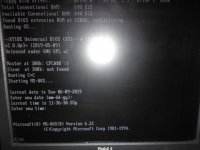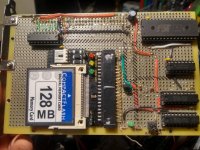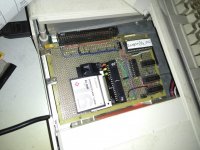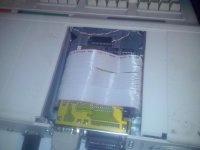Well, EPROM idea was a dud, but I tried flashing it using XTIDECFG with the original 8K flash chip in it*, and it actually worked. I used r602. It still will not acknowledge any drive though, but I can at least boot from a floppy properly. (However that fails the first time, every time, after it looks for the hard disks and then tries the floppy.)
I am still playing with it. Thanks for the advice.

*ironically this sort of thing was the reason I bought that programmer, to avoid in-PC flashing
Well, that's progress, at least. That other chip you tried might have a different pinout than the Atmel the kit came with.
It's not necessary to use the FLASH utility; XTIDECFG can flash within the program itself. At least, it works for me. There's a data-protection flag you gotta set properly when flashing it, otherwise you can't re-flash in the utility without using a programmer to wipe it, and I'm still trying to figure out which way it's supposed to be set. But these programmers have other uses, so worth keeping around regardless.
You can hold down the [A] key at POST to make it boot straight to A:, and in the in XTIDECFG, once you have the BIOS loaded, before you flash it, under
"Configure XTIDE Universal BIOS" > "Boot Settings," you can set the default boot device to
00h if you want first floppy, or
80h for the first hard drive.
What are J1 and J2 set to on the card? If it's configured for "high-speed mode" then under
"Configure XTIDE Universal BIOS" > "Primary IDE Controller" > "Device Type" you'll need to have it set as "XT-IDE rev.2 or modded rev.1" when you flash the ROM, but if set for compatiblilty mode, then set for "XT-IDE rev.1". And of course, make sure the
"Base (cmd block) address" is set for
"300h," if that's what your card is set for. The ROM address switches can be changed at any time, but whatever the I/O switches are set for must be programmed into the BIOS when you flash it.





